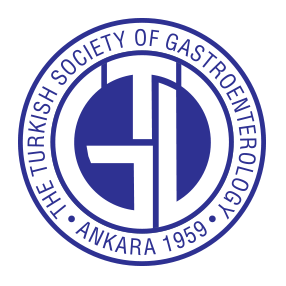Background/Aims: The effect of a gluten-free diet on the small intestinal mucosa in patients with celiac disease (CD) is unclear. The occurrence of mucosal healing and the permanence of villous atrophy in celiac patients under a gluten-free diet were investigated.
Material and Methods: The symptoms, laboratory values, autoantibody levels, and endoscopic mucosal biopsy samples of 115 celiac patients, 56 of whom were in remission at different time periods since diagnosis, were examined.
Results: Although 61.8% of patients said they were compliant with the gluten-free diet, 48.7% were in remission. Sixty-seven percent (n = 77) of patients with CD reported at least one symptom. Only weight loss was associated with disease activity (P = .019). While only 5 (8.9%) of the patients in remission were endoscopically and histopathologically normal, villous atrophy was detected in 69.9% of the patients. Villous atrophy was present in 86% of patients within the first 5 years of diagnosis, while this rate was 59% in patients older than 10 years. Logistic regression analysis showed that compliance with diet (odds ratio [OR]: 4.39; P < .001) and normal endoscopic appearance of the mucosa (OR: 13.01; P < .001) were the strongest predictive factors of remission.
Conclusion: Diet compliance and remission rates of celiac patients increase over time. However, histologically, intraepithelial lymphocytosis almost never improves, and villous atrophy persists in most patients even if they comply with the diet. Although the asymptomatic nature of the patients, their autoantibody titers, and their dietary compliance are considered important indicators of remission, these parameters do not clearly reflect the histological status of the mucosa.
Cite this article as: Ebik B, Bacaksiz F, Akkuzu MZ, Yavuz A, Karabulut Ü, Kaya M. Can the mucosa heal histologically in celiac disease? What are the indicators of remission in celiac patients? Turk J Gastroenterol. 2025;36(8):523-530.




.png)
.png)